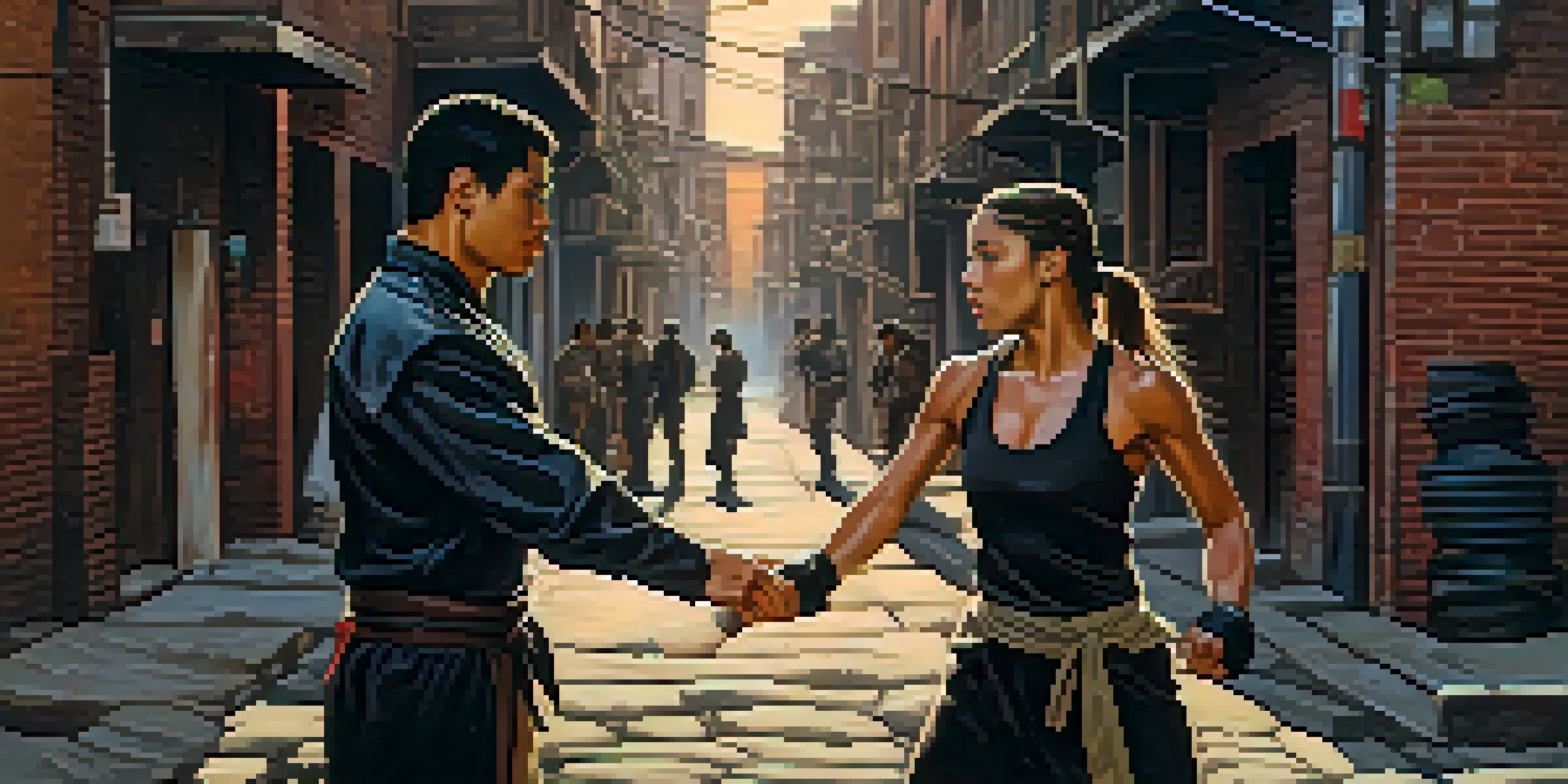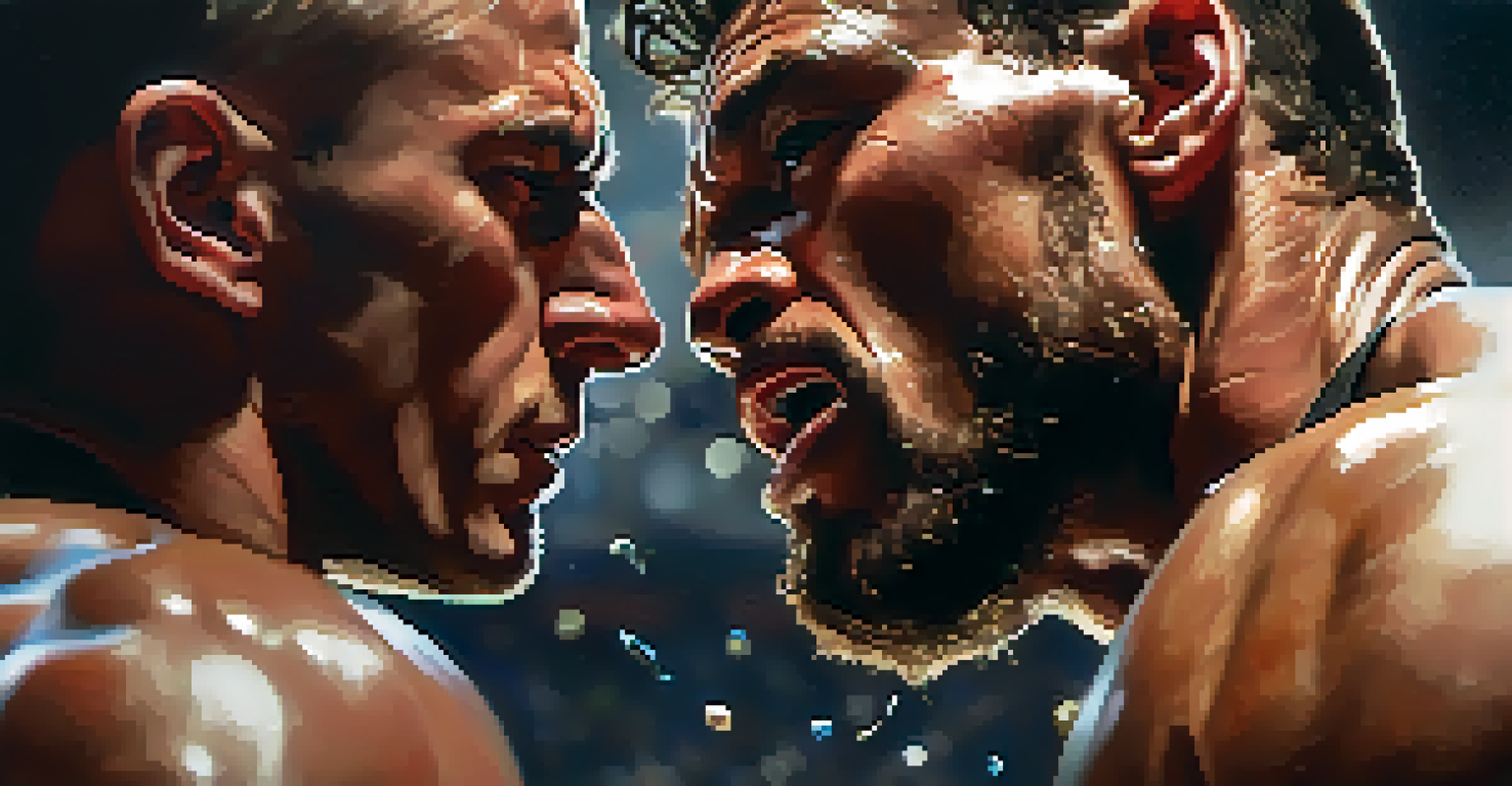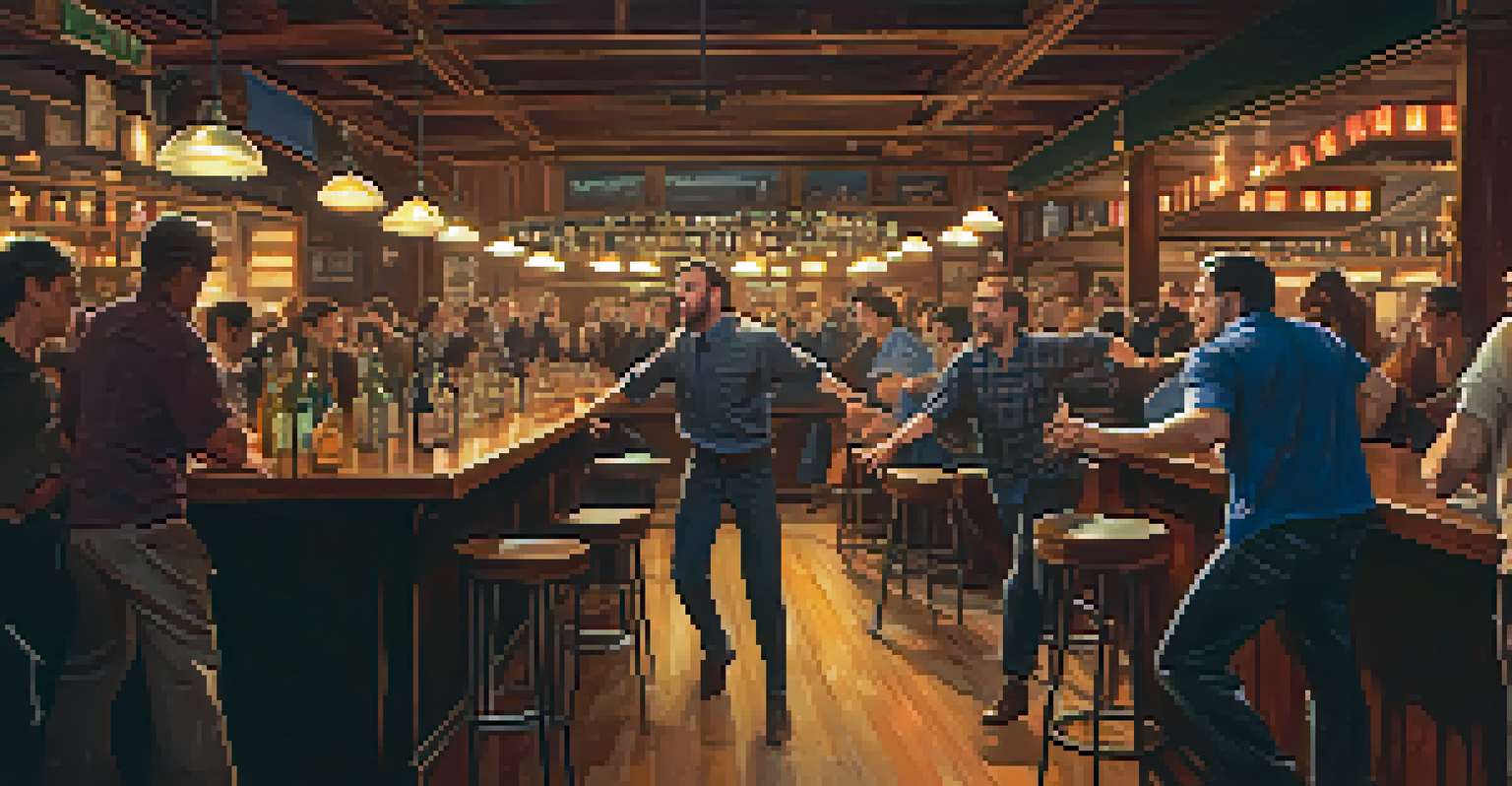Choreographing Authenticity: Realism in Fight Scenes

Understanding Authenticity in Fight Scene Choreography
Authenticity in fight scenes is about making the action believable. It's not just about flashy moves; it's about characters' motivations and emotions driving the fight. When viewers can connect with the stakes involved, the scenes become more engaging and impactful.
The best fight scenes are those that reflect the characters’ emotions and motivations, making every punch and kick feel personal.
For example, imagine a character fighting to protect a loved one versus fighting for sport. The intensity and style of the choreography will differ significantly based on the character's emotional state. This connection between emotion and action is what makes a fight scene resonate with the audience.
Ultimately, authentic fight choreography requires a deep understanding of the characters involved. Each punch thrown or kick landed should reflect their personality, history, and emotions, ensuring that the action feels real and relatable.
The Importance of Training and Realistic Techniques
To achieve authenticity, fight scenes should incorporate realistic techniques that actors or stunt performers can realistically execute. This means proper training in martial arts or combat techniques can significantly enhance the believability of the choreography. Audiences can often tell when a fight scene lacks authenticity, leading to disengagement.

Consider the difference between a well-trained actor performing a skilled martial arts sequence versus one who relies on quick cuts and camera tricks. The former often captivates viewers, drawing them into the moment, while the latter can feel contrived and uninspiring.
Authenticity Drives Fight Impact
Authentic fight scenes resonate with audiences when characters' motivations and emotions drive the action.
Moreover, incorporating realistic movements doesn’t mean sacrificing creativity. Choreographers can blend real techniques with artistic flair, creating a dynamic fight scene that feels both authentic and visually impressive.
Creating Emotional Stakes in Fight Scenes
Emotional stakes are crucial for making fight scenes resonate. When characters have a personal reason to engage in a fight, it elevates the tension and investment for the audience. This connection can be established through backstory, relationships, or high-stakes situations.
In filmmaking, the choreography of a fight is not just about the action; it’s about telling a story through movement.
For instance, a fight between two friends turned rivals carries a different weight than a random street brawl. The history and emotions involved create a richer narrative, allowing viewers to feel the impact of each blow. This emotional depth transforms the fight from mere action into a storytelling device.
By focusing on what’s at stake for the characters, choreographers can craft scenes that not only showcase physical prowess but also explore deeper themes of conflict, loyalty, and redemption.
Incorporating Realistic Injuries and Consequences
In the realm of authentic fight choreography, it’s important to consider the consequences of violence. Realistic injuries can add a layer of authenticity that heightens the stakes of the battle. When characters react to pain or exhaustion, it grounds the fight in reality and makes the outcome more impactful.
For example, if a character sustains a wound or shows signs of fatigue, viewers are reminded that fighting has real consequences. This approach forces both the characters and the audience to confront the seriousness of the conflict, leading to a more profound narrative experience.
Training Enhances Realism
Proper training in martial arts and realistic techniques significantly boosts the believability of fight choreography.
Balancing the choreography with realistic portrayals of injury keeps the audience engaged. It encourages them to invest emotionally in the characters’ journey, making every punch, kick, and fall matter.
Utilizing Environment for Enhanced Realism
The environment plays a crucial role in the authenticity of fight scenes. Utilizing real-world locations and elements can add an extra layer of realism to the choreography. Whether it's a narrow alleyway or a crowded bar, the setting can influence the fight's dynamics and creativity.
For instance, fighting in a confined space may lead to a different style than in an open arena. Incorporating surroundings, like using furniture as obstacles or weapons, can create a sense of spontaneity and realism. It turns the environment into a character itself, shaping the narrative.
Moreover, using natural elements, like rain or uneven terrain, can affect how characters move and interact. These details enrich the choreography, making the fight feel more grounded and believable to the audience.
The Role of Sound and Music in Fight Scenes
Sound and music are powerful tools that can elevate the realism of fight scenes. The right sound effects can make each punch and kick feel impactful, while a well-chosen score can amplify the emotions of the moment. Together, they create an immersive experience that draws viewers into the action.
For example, the sound of a fist connecting with a jaw should evoke a sense of weight and force. When combined with dramatic music that mirrors the characters' emotions, it enhances the overall intensity of the scene. This synergy between sound and choreography can leave a lasting impression.
Emotional Stakes Elevate Tension
When characters have personal stakes in a fight, it deepens the narrative and engages the audience on an emotional level.
Moreover, silence can also play a role, emphasizing the weight of a moment or the aftermath of a fight. By thoughtfully incorporating sound, choreographers can deepen the audience's connection to the fight, making it an unforgettable part of the story.
Collaborating with Actors for Authentic Movement
Collaboration between choreographers and actors is vital for achieving authentic movement in fight scenes. Actors bring their physicality and interpretation to the choreography, allowing for a more genuine performance. This partnership ensures that the movements feel natural and align with the characters’ personalities.
For example, if an actor is known for their agility, the choreography can highlight that trait, showcasing their strengths. Conversely, a character who is more grounded may have a heavier fighting style. By considering the actors’ abilities and interpretations, choreographers can create more cohesive and believable scenes.

This collaboration enhances the overall quality of the fight scene, allowing for spontaneity and creativity. When actors feel comfortable with the choreography, it translates to a more authentic portrayal that resonates with the audience.